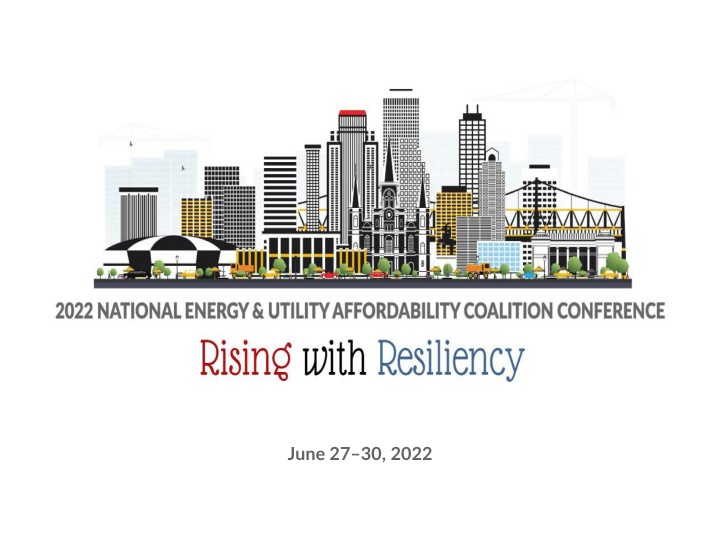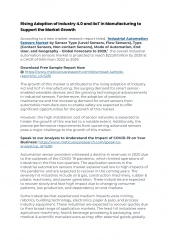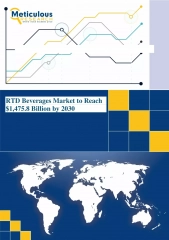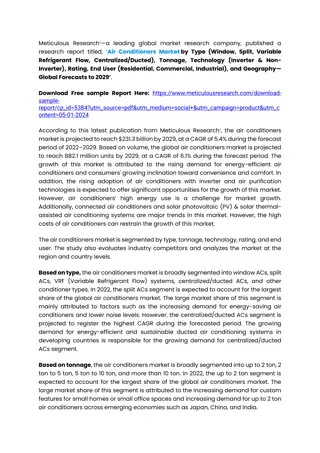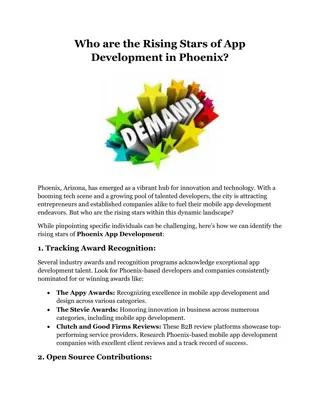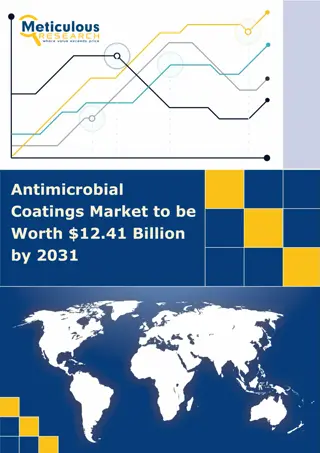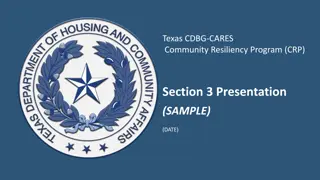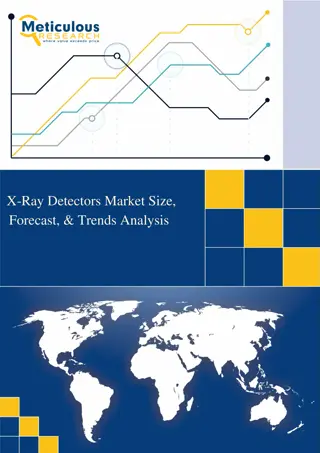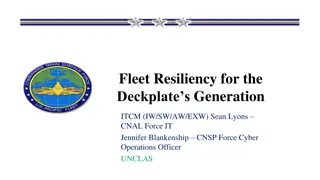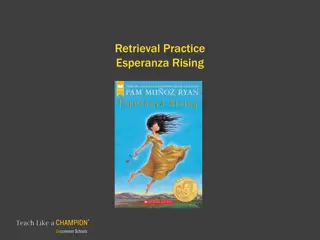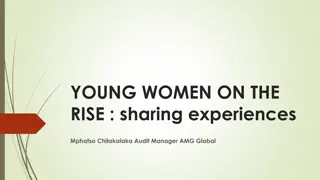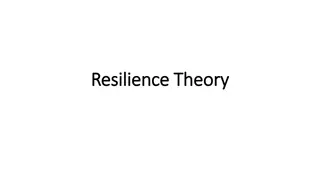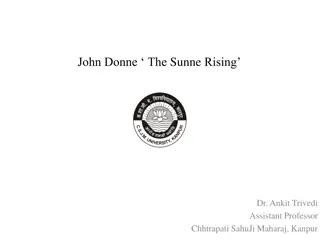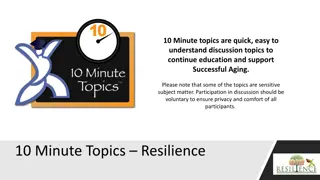Rising with Resiliency
Residential solar programs have evolved to include low- and moderate-income (LMI) households through initiatives like community solar, offering expanded opportunities for underserved groups to benefit from solar energy. Various jurisdictions are developing strategies to promote LMI participation in solar, including identifying target communities, deploying incentive models, engaging eligible households, and collaborating with community partners.
Download Presentation

Please find below an Image/Link to download the presentation.
The content on the website is provided AS IS for your information and personal use only. It may not be sold, licensed, or shared on other websites without obtaining consent from the author.If you encounter any issues during the download, it is possible that the publisher has removed the file from their server.
You are allowed to download the files provided on this website for personal or commercial use, subject to the condition that they are used lawfully. All files are the property of their respective owners.
The content on the website is provided AS IS for your information and personal use only. It may not be sold, licensed, or shared on other websites without obtaining consent from the author.
E N D
Presentation Transcript
Community Engagement in Low- and Moderate-Income Solar Ari Gerstman, DOEE Dan Bausch, APPRISE
Outline and Approach Residential Solar and LMI Households DC Solar for All LMI Solar Discussion 3
RESIDENTIAL SOLAR AND LMI HOUSEHOLDS 4
History Residential solar programs historically targeted the installation of solar systems directly on homes. E.g. Rooftop solar Early solar programs did not specifically target LMI households. As solar programs and markets have matured, costs have decreased. However, solar installations remain unaffordable or unfeasible for a large portion of LMI households. 5
History In recent years, distributed solar programs have been piloted, launched, and expanded to allow households to participate in solar without installing systems on-site. E.g. Community solar 21 States and DC have passed legislation supporting community solar (NREL Sharing the Sun, July 2021) Community solar offers expanded opportunity for LMI households to receive the benefits of solar generation. 6
Current Landscape Increase in interest and policies to promote participation in solar for LMI households and underserved groups. Jurisdictions are developing different approaches to: Determine who to target (Disadvantaged Communities, Environmental Justice Areas, Moderate-Income Definitions) Identify the best models to deploy and resource (incentives, grants, etc.) Find and recruit eligible households (rely on vendors, leverage other programs, outreach campaigns) Engage community partners (stakeholder development process, trainings, etc.) 7
LMI SOLAR PROGRAM EXAMPLES 8
NYSERDA NY-Sun (New York) Solar Energy Equity Framework (enacted in 2020) A goal of 40% of solar benefits be provided to targeted to disadvantaged communities (DACs) to meet Climate Act requirement. NYSERDA has developed draft criteria for DACs and is undergoing public comments now. Recent expansion under new roadmap. https://www.nyserda.ny.gov/About/Newsroom/2021-Announcements/2021-12-17-Governor-Hochul- Announces-New-Framework 9
NYSERDA NY-Sun (New York) LMI Initiatives Affordable Solar Rooftop Incentive Incentive for rooftop systems for income-qualifying households Multifamily Affordable Housing Incentive Incentives for systems on affordably housing buildings Affordable Solar and Storage Predevelopment and Technical Assistance Grants for community-based planning and preparation work Inclusive Community Solar Adder Incentives for community solar projects serving LMI households Small utility bill discount to qualifying households Expanded program jointly run with National Grid to enroll customers from bill discount program Solar for All / Expanded Solar for All Community-led Solar (Co- Design In Progress) Working to create program for community-developed projects in underserved areas 10
Illinois Solar For All Established in 2016 by Public Act 99-0906 Future Energy Jobs Act Four Sub-Programs: Low-Income Distributed Generation Systems for homes/multifamily buildings Low-Income Community Solar Subscriptions to PV system Non-Profits and Public Facilities Systems for non-profits or public buildings in Environmental Justice or low-income communities Low-Income Community Solar Pilot Programs Projects funded using competitive procurement approach 11
Illinois Solar For All Low-Income Community Solar Sub-Program Subscribers receive bill credits for their subscription share Projects must show partnerships with community stakeholders in the area where the project will be located. Incentives are provided for low-income subscription portion. http://www.appriseinc.org/wp-content/uploads/2020/02/ILSFA-Phase-II-First-Interim- Report-Presentation-12-13-19.pdf 12
Origins Established in 2016 by the Renewable Portfolio Standard Expansion Act Statutory Language The Program shall provide the long-term financial benefits of solar energy production to at least 100,000 District low-income households in an amount equivalent to at least 50% of the District's average residential electric bills for calendar year 2016 by December 31, 2032. The Department shall, to the extent feasible, meet this goal by reducing low-income households' electric or gas bills by at least 50%. Administered by DC Department of Energy and Environment (DOEE) 14
Phased Approach Phase 1 (FY 2017-2019) Fund grantees to test models of deployment Establish community partnerships Work through initial barriers / challenges Identify strategies to furnish benefits to those without electric bills Phase 2 (FY 2020-FY 2022) Increase solar deployment (scale up) Refine / develop strategies for large-scale community solar deployment Identify ways to increase enrollment Assess progress and conclusions from efforts 15
Solar Types Single Family Installations Install on rooftops Sized so savings are 50% of usage (when feasible) Rooftop repair allowable Multifamily Affordable/Low- Income Housing Direct and indirect benefits to residents in buildings under affordable housing covenant Installations on land / facilities Residents at the location, in area, or in District when receive virtual net metering credits. Subscribers guaranteed benefits for minimum of 15 years. Community Solar 17
Solar Benefits to Households Direct Bill Credits Net metering credits on electric bill Benefits targeted to 50% of bill or $500 annual value. Resident services / amenities Building improvements Reductions in homeowner s association (HOA) fees Indirect Benefits 18
Results So Far Provided Innovation & Expansion Grants to 9 organizations. Established multiple partnerships / Program Components Deployed approximately 20 MW serving 8,000 households Effective use of LIHEAP information/system to target and confirm qualifying households Over 250 residents received job training via Solar Works DC Expenditures (Millions) Fiscal Year Megawatts Deployed Households Targeted 2017 <1 20 $3.04 2018 <1 364 $19.08 2019 7 Approximately 8,600 $22.18 2020 11 3,100 $27.73 TOTAL Through 2020 ~20 ~12,000 $72.03 19
Example: Oxon Run Brownfield site owned by government Contract awarded to GRID Alternatives Mid-Atlantic to complete solar installation at site. 2.65 MW to benefit ~780 LMI households in immediate vicinity. Area land restoration for solar installation Construction completed in Dec. 2020. 20
Community Engagement Challenges To reach the 2032 goal, the program needs to serve several thousand new households per year. The LMI population in DC is 58% LIHEAP-eligible / 42% not 72% pay electric bill / 28% have no electric bill Continued effort needed for increasing participation 21
Community Engagement Challenges Expanding relationships with trusted community partners and groups Communicating solar benefits to LMI households Reducing barriers to applying/recertification Coordination with partners and utility Recruitment of building owners and sites 22
Getting Started with LMI Solar There are so many options, so many steps, so many voices. How do you identify where to start with developing effective LMI solar initiatives?
Solar Deployment / Business Models Which models worked well in your jurisdiction? Why? Which models haven t worked for your jurisdiction? Why not?
Partners and Stakeholders How do you identify potential partners? How do you build and maintain partnerships? What are the challenges?
Targeting LMI Households How do you identify or find LMI households? How do you recruit them? What are the challenges with reaching low- income households? Moderate-income? How do you retain them?
LMI Solar Challenges What are the main hurdles you are facing with LMI solar? How are you working to overcome those problems?
Equity Considerations How do you make sure programs are serving LMI households with different characteristics and that initiatives are as inclusive as possible? Are we systematically missing any segments?
Recommendations Where else would models that worked for your jurisdiction work well? What should other policymakers and program advocates consider and plan for to make programs more successful?
Contact Ari Gerstman Associate Director for Policy and Compliance Energy Administration Department of Energy & Environment Government of the District of Columbia 1200 First Street NE, 5th Floor Washington, DC 20002 202-499-2015 Dan Bausch Project Director, APPRISE 609-252-9050 Daniel-Bausch@appriseinc.org 31
